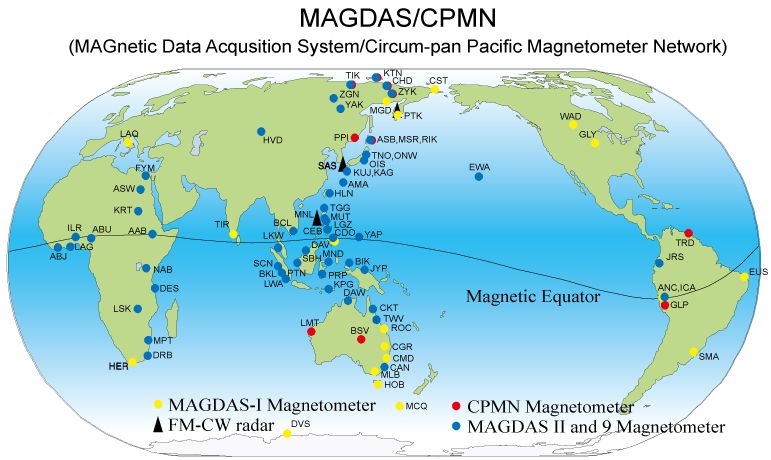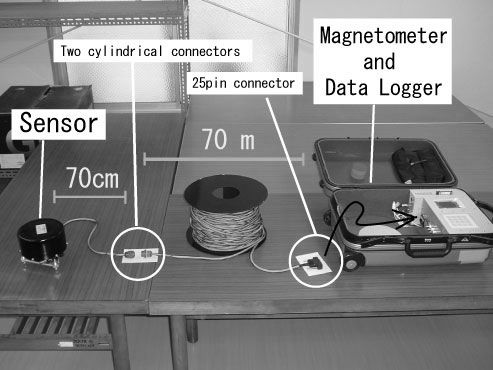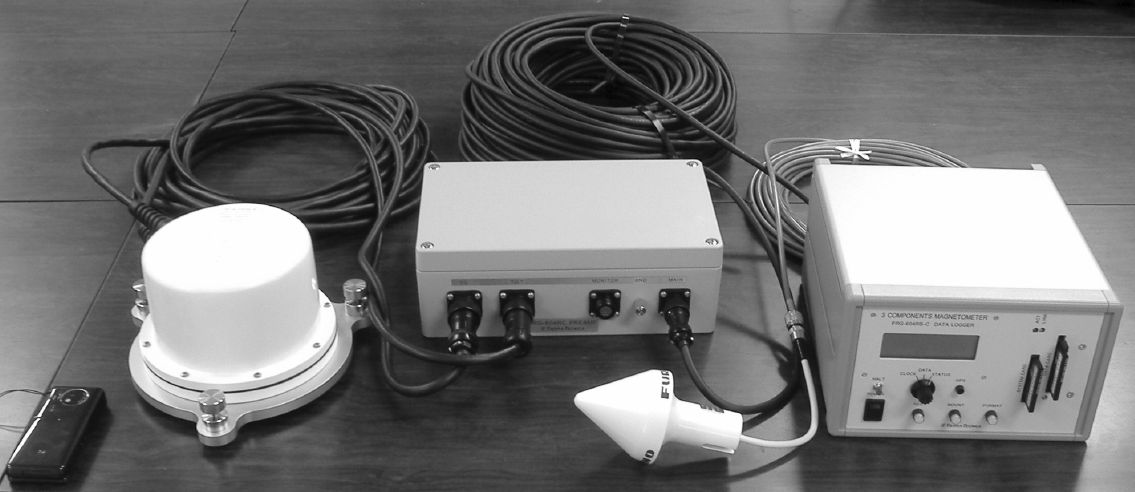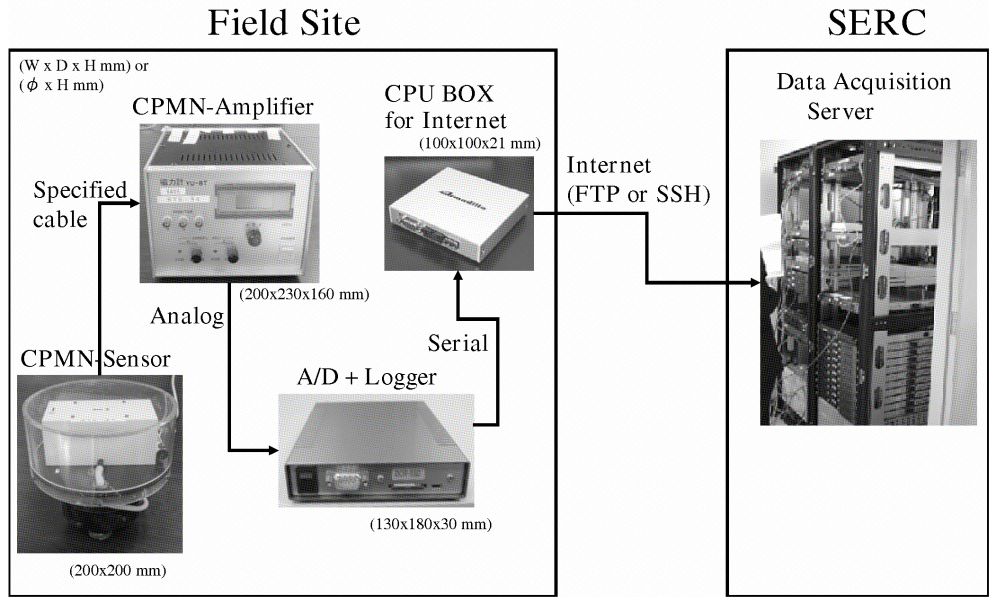Magnetic Data Acquisition System Project (MAGDAS)PIs: Kiyohumi Yumoto of Space Environment Research Center (SERC), Kyushu University, JapanThe MAGDAS is being deployed for space weather studies during 2005-2008, overlapping heavily with the IHY/UNBSS program. The project will aid the study of dynamics of geospace plasma changes during magnetic storms and auroral substorms, the electro-magnetic response of iono-magnetosphere to various solar wind changes, and the penetration and propagation mechanisms of DP2-ULF range disturbances from the solar wind region into the equatorial ionosphere. With the help of MAGDAS data, one can conduct real-time monitoring and modeling of (1) the global 3-dimensional current system and (2) the ambient plasma density for understanding the electromagnetic and plasma environment changes in the geospace: Global 3-D current system: The MAGDAS data will be used to map the ionospheric equivalent current pattern every day. The current and electric fields at all latitudes are coupled, although those at high, and middle and low latitudes are often considered separately. By using the MAGDAS ionospheric current pattern, the global electromagnetic coupling processes at all latitudes will be clarified. Ambient plasma density: New MAGDAS magnetometers will be deployed at several pairs of stations along the 210 magnetic meridian to observe the magnetic field line resonance (FLR) pulsations. Each pair will be separated in latitude by ~100 km. The FLR oscillations are useful for monitoring temporal and spatial variations in the magnetospheric plasma density. The MAGDAS data will be analyzed by the amplitude-ratio and cross-phase methods to identify the FLR events and measure their eigen-frequencies, providing the plasma density varying with time. These measurements will be highly valuable in understanding the variations of the ambient plasma density and the location of the plasmapause during magnetic storms and auroral substorms. |
MAGDAS Home Page

|
So far, ICSWSE (SERC) has deployed 71 MAGDAS magnetometers all over the world. However, they are not placed randomly. Locations are selected with a strategy.
The 3 Chains of MAGDAS
- 210 Magnetic Meridian Chain -Runs north and south of Japan, in Asia.
- Dip Equator Chain -Runs around the globe (magnetic equator)
- 96 Magnetic Meridian Chain -Runs north and south in Africa, from Hermanus up to Egypt.
Photos of MAGDAS-I, II, and 9
http://www.serc.kyushu-u.ac.jp/news/MAGSessRes2010/appendix/AppendixB.pdf

MAGDAS-A:
Fluxgate magnetometer system
with data logging and transfer units.
- Tiltmeter of sensor
Range: ±10, Resolusion: 0.2 arc-sec - Thermometer of sensor:
Range: ±600C, Resolusion: 0.0020C - Observation ranges:
±1000nT, ±2000nT, (±65000nT) - 16bit A/D converter:
0.031nT/dig, 0.061nT/dig - Sampling rate: 1-sec, 1-min
- Estimated noise level: 0.02nTp-p
- Total weight: 14.5 kg
MAGDAS-9

Total 15.5 kg |
|
